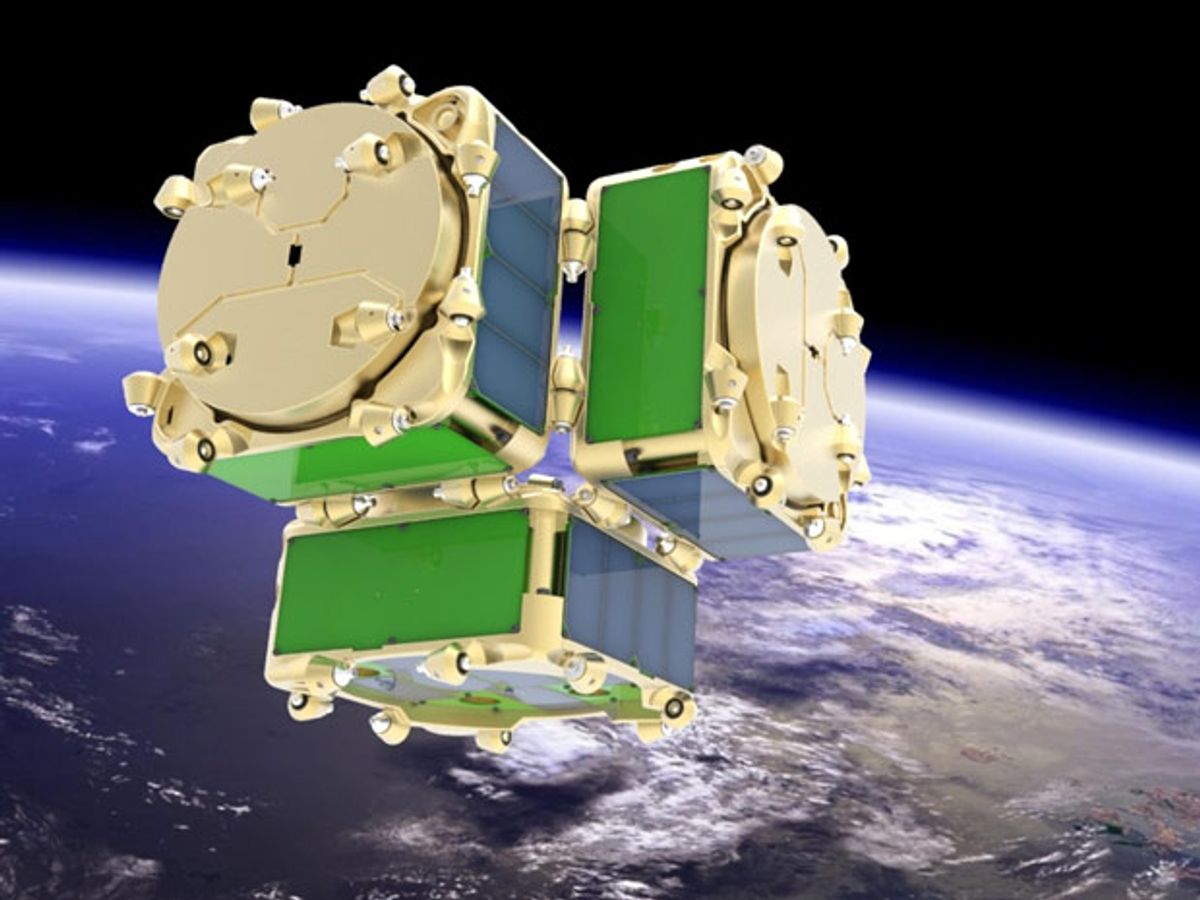Here comes the "zombie frankensatellite.” Or at least the very first piece of what DARPA needs to make it happen.
DARPA's Phoenix program grabbed a lot of attention in 2012 when it announced a plan to revive old satellites by mining them for parts and constructing a new satellite around them.
Now, the pieces are coming together for the program’s first space launch. On Tuesday, Seattle-based launch broker Spaceflight announced that it has signed an agreement to carry Phoenix’s first spacecraft. It’s slated to launch some time in the third quarter of 2015 as a secondary payload on a rocket. Although Spaceflight has not yet identified the rocket provider for this launch and could not discuss it, I have been told by several people that the mission will go up on a SpaceX Falcon 9.
The first DARPA Phoenix spacecraft won’t be an orbiting satellite factory. Instead it will be an already completed spacecraft, called eXCITe, built from smaller parts. Constructed by NovaWurks, based in Los Alamitos, Calif., the spacecraft will be made out of a set of identical “satlets,” which the company dubs HiSats, for Hyper-Integrated Satlets. Each measures about 20 by 20 by 10 centimeters.
Each satlet is effectively a self-contained spacecraft, with its own computer, power, communications capabilites, and propulsion. But Talbot Jaeger, NovaWurks founder and chief technologist, says they’re designed to be combined together. He likens them to liver cells. Each one might be capable of performing the basic filtration functions of the liver, but they’re only really effective in aggregate. He did note that at least one vital piece of the spacecraft, the antenna, which is by necessity fairly large, would have to be launched as a payload that’s attached to the satlets.
At the moment, eXCITe is “not a fixed design. It can change depending on what payloads show up and what we can make work on our time frame,” says Jaeger. Depending on what comes in and when, eXCITe will contain anywhere between 10 and 20 satlets, he says.
This is the kind of flexibility Jaeger is aiming for. The approach “frees us from thinking of just small spacecraft and just large spacecraft,” he says. “We now have something that can bridge that gap.”
This might sound like a far cry from an orbiting satellite construction and recycling operation. But it’s part of an overall plan to move away from monolithically-built spacecraft towards something far more modular and manipulable, program manager David Barnhart told me earlier this year. The Phoenix program is “all about how to address the cost of getting and doing things in space," he said.
Piggybacking on a rocket flight as a secondary payload is part of that as well, Barnhart told me.
The satlets will be doing just that on their first trip to space. The firm Spaceflight will carry the eXCITe into orbit on a ring-shaped spacecraft called SHERPA, modeled after the secondary satellite carrier developed by Moog for the U.S. Air Force’s Evolved Expendable Launch Vehicle program.
This will also be the maiden voyage for SHERPA, which Spaceflight hopes to use going foward to ferry secondary payloads into orbit. On this first flight, SHERPA will release eXCITe, along with 1200 kg-worth of other payloads to fly off on their own.
”We’re building a spacecraft that deploys spacecraft,” says Adam Hadaller, mission manager for the upcoming flight. SHERPA has its own power, communications, and positioning gear. Future incarnations could also have propulsion to carry payloads to orbits that differ from the intended orbit of the primary spacecraft.
The smaller the satellite, the longer it takes for the drag of Earth’s atmosphere to pull it down. A SHERPA with thrusters could potentially carry smaller satellites down to a lower orbit, where the atmosphere is thicker, so they would burn up faster at the end of their mission and so not contribute as much to the problem of orbital debris, Spaceflight president Curt Blake. It’s appealing to think there’s a way to make it easier to get things into, and out of, space.
Rachel Courtland, an unabashed astronomy aficionado, is a former senior associate editor at Spectrum. She now works in the editorial department at Nature. At Spectrum, she wrote about a variety of engineering efforts, including the quest for energy-producing fusion at the National Ignition Facility and the hunt for dark matter using an ultraquiet radio receiver. In 2014, she received a Neal Award for her feature on shrinking transistors and how the semiconductor industry talks about the challenge.



